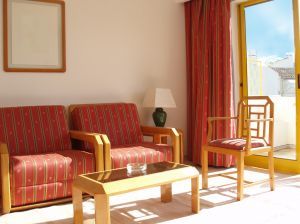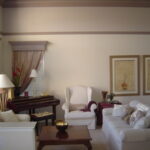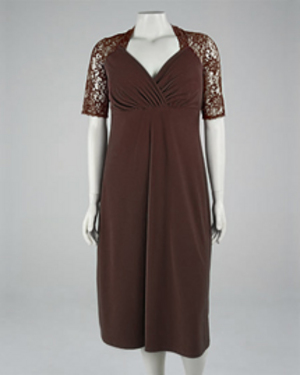What Makes a Studio Apartment Difficult to Decorate?
Decorating a studio apartment presents several unique challenges. These one room wonders are not like the average apartment or stand-alone home, which is likely to have distinct rooms and locations, with walls, for a bedroom, a living room, a dining room, and a kitchen, to name a few. The ability to decorate each room in separate styles, with different wall colors, is a simple undertaking in comparison to the challenges present in a studio apartment. An apartment serves many different functions to different individuals, but an apartment designed for entertaining should have different design aspects than an apartment designed for sleeping, different from an apartment designed for people who work at home. Decorating a studio, the one-room wonder, can be very difficult.
Why Should I Live in a Studio Apartment?
A studio apartment is typically smaller than an apartment with several rooms. As a result of its generally smaller size, it is considered less attractive to families and their living arrangements. The rental prices of studios are consequently lower than an apartment with a separate bedroom and living room, even if it is of similar square footage to the studio.
The studio apartment is an affordable alternative for many individuals. Young bachelors or bachelorettes looking to live outside of their parent’s home, and/or without roommates can seem a near impossible task in locations which have skyrocketing real estate prices and rental rates. A studio apartment may allow these people to live independently, without breaking the bank. Young couples and retired adults may also find a studio to be cost effective when conserving or saving money. Lastly, environmentally conscious people may find that downsizing to a studio apartment allows them to live with less clutter and with a smaller energy footprint.
How Do I Begin Decorating My Studio?
For those individuals taking the leap into living in a studio apartment, it can become painfully obvious that decorating the space will be a challenge. For starter problems when viewing one room, especially a rectangular room:
Where do I eat?
Where do I entertain?
Where do I sleep?Step One to Decorating a Studio Apartment: Create a Checklist Plan!
In order to best decorate a studio apartment, it’s important to make a checklist of things you plan on doing in your studio apartment. A person who has a lot of friends and likes to throw dinner parties should likely plan for room to eat, separate from a location to retire to after eating. A person who plans to use their apartment almost exclusively for sleeping should plan to find the most comfortable way to place their bed, perhaps where direct sunlight will arrive in the morning, or alternatively, away from the sun. Be sure to prioritize your checklist plan in order of importance.
Here is an example checklist plan:
Privatized Bedroom Area.
Distinct Entertainment Area (Television + Couch).
Comfortable, Quiet Computer/Laptop and Work Space.
Dining Area.
Leisure/Reading Area.The checklist above is quite vague, but would adequately serve my needs as a young adult not looking to entertain anyone besides myself, cook for anyone besides myself, or even eat at a kitchen table. The checklist you create should generally be longer, and more specific.
Step Two to Decorating a Studio Apartment: Examine Your Current Belongings.
Now that you have created a list of the things that you plan on doing in your apartment, and prioritized the areas of your apartment, it is critical to think about what belongings you may already have that will be entering your studio apartment. Also, if some items are a must, but not currently in your inventory, include them. It is most important to think of large items that will take up massive portions of your square footage. Specifically, tables, chairs, entertainment centers, and couches should all be assessed for suitability in your new studio. Create a list of these items and prioritize them in order of the prominence you would like them to play in your apartment. Keep in mind that you may need to emphasize large furniture in your studio later in this article, or dump it entirely!
Here is an example list:
Large Television.
Large Stereo Equipment.This list, like the one previously, is a short list, but it would serve my needs because I didn’t have a kitchen table or a couch, and didn’t plan on purchasing large ones for my move. I didn’t have a television yet, either, but a large one was going to be purchased, for sure. I already had some large stereo equipment, and though it was mostly gathering dust because of my iPod usage, I didn’t plan on dumping it.
Step Three to Decorating a Studio Apartment: Decide on a Theme.
Deciding what theme is going to be central to the apartment may seem a bit silly, but it’s critical in a space where all forms of furniture may be seen from all points inside the apartment. For the most part, only one theme can be chosen or you risk the chance of appearing to have no taste in decorating at all.
Here are some options to choose from:
Country Living
Ultra Modern
Minimalist
Retro
VictorianThis list may have some overlap. When looking for a theme, I had a blank slate, with no furniture. If an existing couch has a large floral print, the apartment may be best suited for a country theme, but remember that there may be some leeway to slipcover an existing couch or buy new linen for a bed that doesn’t match up with the chosen theme. Ultimately, I chose a fusion between retro and ultra-modern because it involved a combination of very straight lines and funky curves. I would definitely recommend sticking to just one theme, though.
Step Four to Decorating a Studio Apartment: Choose Color Combinations.
Colors can make an apartment feel smaller, larger, cozier, colder, warmer, and a whole lot of things. Do not choose colors simply because they “look pretty” or “feel good.” Remember to consider that one color may be nice, but matching hues of it may not be so attractive. Oranges can become brown, but also become a bit tan and bland. Purples can turn into a slippery slope towards pink, even though they shouldn’t. Greens can be bold and forest-like, but become split pea soup in no time. Hues are very important. While the central color may ultimately come down to the theme, keep in mind that pastels are airy and will open up a small space. Alternatively, splashes of bold colors, especially red and black, can make white space appear larger.
Final Tips for Themed Living!
Tips for Country Living: Consider Large Floral Prints; Oversize Couch; Small Television. Place your couch close to tables for a cozy feeling.
Tips for Ultra Modern: Monochrome Colors, including Black, White, and Chrome; Larger, Flat Screen Television; Small Couch. Place your television prominently.
Tips for Minimalist: Monochrome Colors. Least Amount of Furniture Possible. Buy a Chaise Lounge or Small Futon in place of a Couch.
Tips for Retro: Loud Colors, especially Orange and Red, with some Greens and Blues appropriate. Curved edges on couches. Round or Oval Tables. Leave room to breathe and relax. Not all spaces need to be filled with color.
Tips for Victorian: Rich Colors, especially Royal Purple and Blue. Golds are appropriate. Couches with Ornate, Visible Legs. Tables with Etching.







